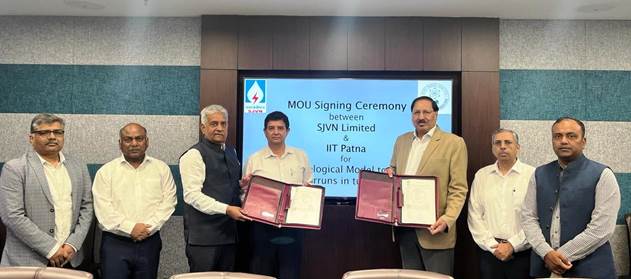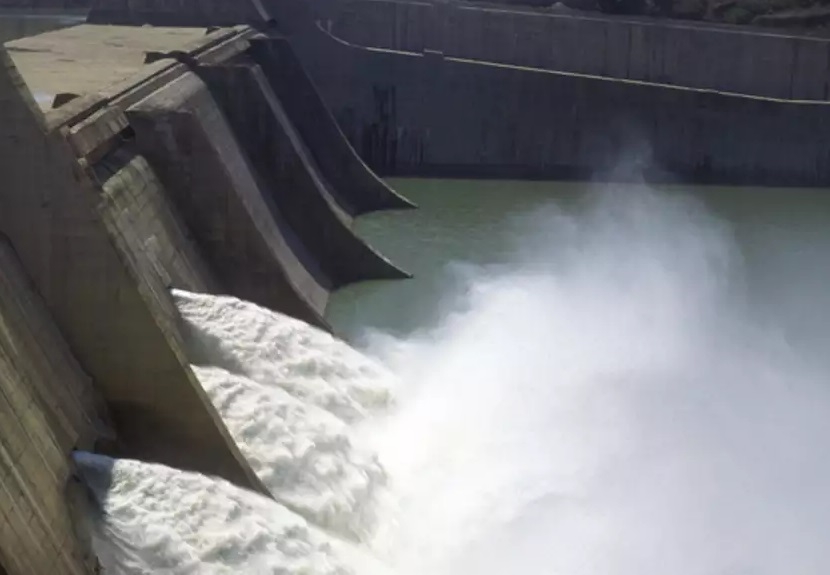PSPs are also known as ‘the Water Battery’, which is an ideal complement to modern clean energy systems….reports Asian Lite News
Hydroelectric power projects with an aggregate capacity of 15 GW are under construction in the country, which will increase the hydro capacity by more than 50 per cent from 42 GW to 67 GW by 2031-32, the Ministry of Power said on Friday.
The Indian Meteorological Department (IMD) has predicted higher rainfall in the current financial year. Further, hydropower projects located in the Himalayan region get base flow from the melting snow and any rise in temperature will increase the flow from this source, the Ministry said.
Moreover, given the ongoing energy transitions in the country, the development of Pumped Storage Projects (PSPs) assumes importance for providing greater inertia and balancing power to the grid.
PSPs are also known as ‘the Water Battery’, which is an ideal complement to modern clean energy systems.
Currently, PSPs with an aggregate capacity of 2.7 GW are under construction in the county and another 50 GW is under various stages of development. It is projected that PSP capacity shall increase from 4.7 GW to around 55 GW by 2031-32, the official statement said.
According to the ministry, the fall in hydropower generation in 2023-24 as compared to 2022-23 cannot be attributed solely to less rainfall. In the southern region, which contributes approximately 22% of the total hydro energy generated, low rainfall has indeed played a role.
However, the hydroelectric power projects in Northern and Eastern regions, comprising over 60% of total hydro energy generation, have been severely impacted by natural disasters in 2023-24. In July 2023, Himachal Pradesh experienced flash floods, disrupting the operation of many power stations in the area. Besides, flash floods in the Eastern region in October 2023 have further hindered the operation of several hydropower stations, thus affecting the generation severely.
While the lightest rainfall since 2018 resulted in reduced water levels in a few reservoirs, the government is reasonably optimistic about the future.
The IMD prediction of a good monsoon in FY 2024-25 suggests a potential reversal of the trend. This anticipated increase in rainfall could contribute to the replenishment of reservoir capacities that were lost during the scarce rainfall in the previous year.
India is in the midst of an energy transition, marked by significant additions of solar and wind power to the current energy mix. Further, power from solar energy is available during the time of the day that does not coincide with the peak power demand.

Hydroelectric power has always played a significant role in the energy landscape of the country, providing essential peaking support to the electricity grid, thus enhancing the reliability and resilience of the power system.
The development of hydropower projects has been marred by various issues such as natural calamities, geological surprises and contractual disputes, which have resulted in slower hydro capacity addition in recent years.
Nevertheless, aligning with the ambitious targets set forth by India in the Nationally Determined Contributions (NDC) under the COP Paris Agreement, which are aimed at reducing emissions intensity of GDP by 45% from 2005 levels by the year 2030 and achieving 50% of installed electric power capacity from non-fossil-fuel sources by the year 2030, the government has adopted a proactive stance towards hydropower development, striving for accelerated progress, the official statement added.
SJVN’s Innovative Tunnelling Approach
Hydroelectric power major SJVN Limited has signed a memorandum of understanding (MoU) with the Indian Institute of Technology (IIT) Patna to use advanced geological models in the company’s tunnelling projects in order to reduce time and cost overruns, according to an official statement issued on Wednesday.
One of the key outcomes of this partnership will be the development of predictive analytics algorithms. These algorithms, leveraging integrated geotechnical data, will forecast potential risks and provide early warning systems specifically tailored for tunnelling projects. Such proactive measures are expected to substantially mitigate time and cost overruns during project execution, the statement explained.
SJVN Chairperson & Managing Director Geeta Kapur said that the primary focus of the MoU is to develop cutting-edge methodologies which integrate diverse geotechnical data sources. These would include geological surveys, borehole data, geophysical measurements and monitoring data from projects.
The collaboration also aims to evaluate the intricate relationship between overburden and deformation, thereby enhancing the evaluation and design of support systems crucial for tunnelling projects.
By harnessing integrated geotechnical data and 3D geological models, SJVN and IIT Patna aim to identify and analyse potential risks and hazards.
The MoU was signed in the presence of Director (Finance), SJVN A.K Singh and Director, IIT Patna, T.N Singh in the national capital on April 2.

Leave a Reply